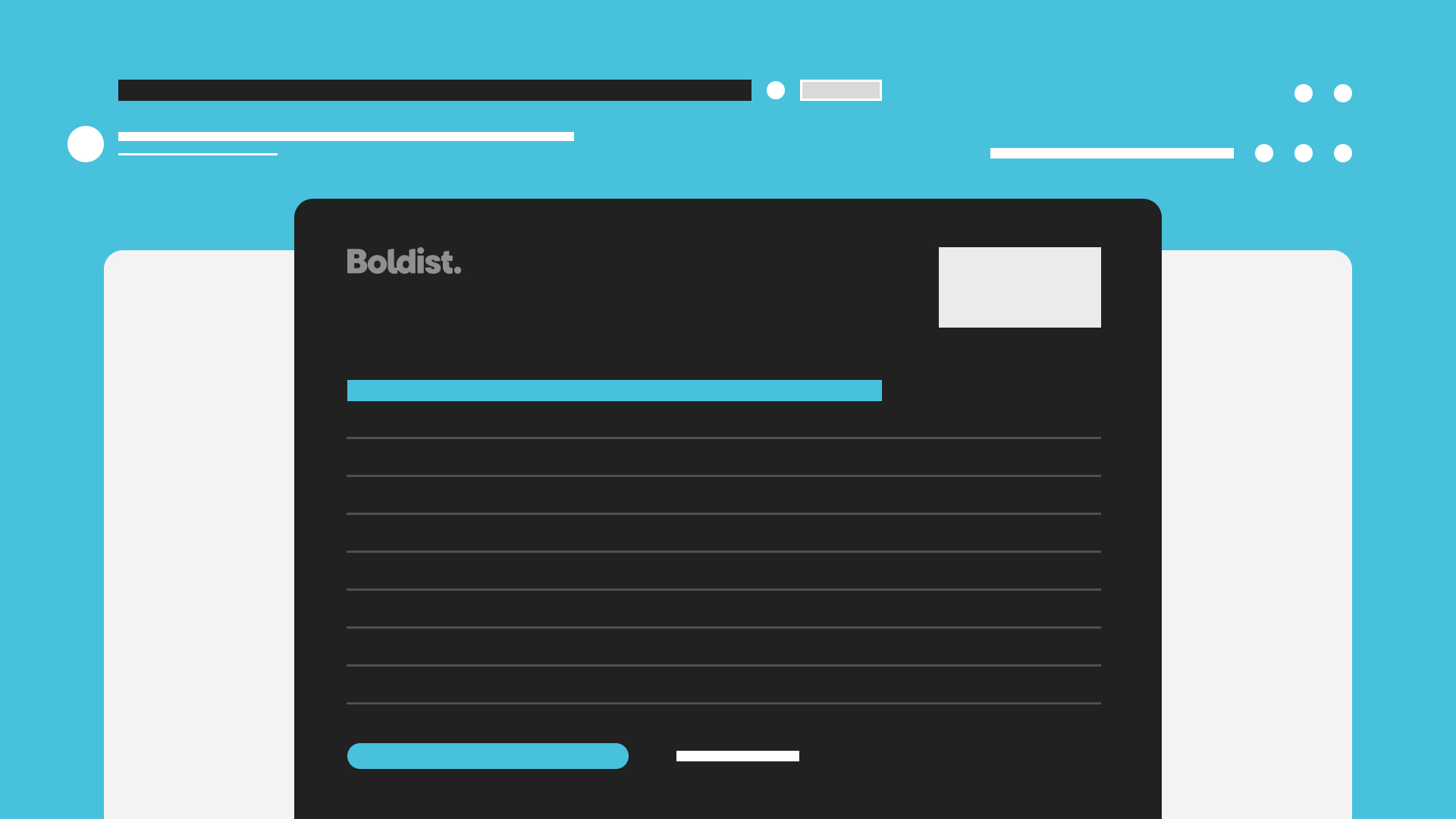If you’re on the fence about implementing an email marketing strategy for your ecommerce business, it’s time to climb down to the pro-email side right now.
Many reasons prove the grass is truly greener over here—like the fact that email marketing for the ecommerce industry has an ROI of $45 for every $1 spent or that cart abandonment emails reclaim 4.43% of sales.
Not bad, huh?
Email marketing is even more enticing with its ability to grow your customers’ lifetime value (CLV), or how much you predict a customer will spend at your business over their entire life.
Now, let’s push the digital envelope and see why ecommerce businesses are increasingly choosing to invest in an email marketing strategy.
The Benefits of Email Marketing for Your Ecommerce Business
Customers are people, and like all people, they want some level of care and attention. We’re talking about fostering the relationships you’ve already developed with customers to maximize the value your ecommerce business receives.
Personalized messaging, custom offers, rewards, and timely support are all ways to increase CLV. And guess what?
Email marketing is the fertile soil to plant those seeds and more.
Also, email marketing is especially useful for ecommerce businesses because emails live in the same online environment as your store. Brick-and-mortar stores don’t have the advantage of selling a product immediately after the customer reads their email (unless they open it in the physical store).
But let’s look closer at the actual benefits of email marketing for an ecommerce business.
Higher Cost Efficiency
You may pay around a few hundred dollars a month for a good email marketing platform like Mailchimp or Klaviyo. You’ll also have to spend time on your email strategy and content or hire someone to do it for you. Despite these costs, you’ll tap into sales you weren’t hitting before.
Email marketing has such a high ROI because the costs are scalable and the rewards are bountiful.
Increased Customer Engagement
Emails are effective at engaging customers because, at least at one point, they opted to receive your message.
If you segment your email list (and you should), you can provide personable and tailored messaging that grabs each customer’s attention and speaks directly to them. When you craft your message correctly, you’ll lower your unsubscribe rate by reinforcing your customers’ decision to provide their email.
The customers who then stay subscribed and open your emails actually want to receive your content. Conversely, you may not get through to as many new and existing customers with digital and social media ads.
An Email List That’s Yours to Keep
A unique aspect of email marketing for ecommerce is that you own your audience. Your audience comes with you no matter where you move your online business. You can switch platforms or CRMs, and your subscribed customers can stay in the loop as you continue your email marketing strategy.
On the other hand, using only social and paid media to connect with your customers is less reliable. Your messaging can be lost if the platforms you use change their algorithm, create new regulations, suspend your account, or go out of business.
Easy Measurability
Several KPIs make it easy to measure the success of your ecommerce email marketing strategy. These metrics provide useful insights about your email tactics and a peephole into your customers’ minds.
Some common email marketing KPIs to keep tabs on are:
- Open rate: tells you the percentage of recipients who opened an email you sent.
- CTR (clickthrough rate): tells you the percentage of recipients who clicked on one or multiple links from an email you sent.
- Conversion rate: tells you the percentage of recipients who carried out your desired action, such as buying a product or subscribing to a newsletter.
- Bounce rate: tells you how many emails were not delivered to the recipient as a percentage of the total emails you’ve sent.
- Unsubscribe rate: tells you how many recipients unsubscribed from your emails as a percentage of the total number of emails you delivered.
These metrics and more can help you improve your email marketing strategy for ecommerce. For example, a low open rate might mean your subject lines need work, while a high unsubscribe rate might mean you’re sending too many emails to your list.
Brand Credibility
When done correctly, email for ecommerce can cultivate trust among those who have already converted.
But your email-sending has to be strategic.
Your email campaigns should include a healthy mix of promotional content and valuable information like company updates, industry news, rewards, and tips.
Imagine a restaurant that serves one dish and nothing else. Not only would you get tired of going there really fast, but you’d probably think the chefs didn’t know how to make anything else.
Diversifying your email content protects against email fatigue and positions your brand as an expert source of knowledge and help.
Reclamation of Inactive Customers
While your email efforts may increase customer engagement for some, others may not interact with your content at all. Maybe these subscribers haven’t engaged with any of your emails in a while, or maybe they haven’t purchased anything even after opening several emails.
However you define an inactive customer, sending a polite reactivation email is a good way to win back customers. Gently prodding an inactive customer (e.g., “Still want to hear from us?”) shows them that you care about them.
Sometimes, customers aren’t intentionally avoiding you—they might have forgotten you exist. A strategically crafted and timed email may remind them to make a purchase or read your content.
Boosted Brand Loyalty With Rewards
Email marketing (along with SMS marketing) is a direct line to your customers. When you have that kind of access to your consumer base, you can segment your email list and use KPIs like conversion rate to find out who your most faithful customers are.
Once you know who’s loyal, you can offer rewards like exclusive discounts, deals, free samples, and gifts. These rewards are a nice digital thank you for their business, but they also reinforce your customers’ buying habits.
Types of Emails to Send Out and Why They’re Important
We’ve talked about the benefits of email marketing in ecommerce, so let’s look at the categories of emails that will help you reach those benefits.
Lifecycle Emails
Lifecycle emails are messages you send customers based on their activity or for certain occasions. It’s best to set up automated sending to customers for lifecycle emails using an online tool.
Common types of lifecycle emails include:
- Welcome emails
- Cart abandonment emails (for customers who left the checkout page without buying)
- Thank you emails
- Feedback request emails
- Reactivation emails (for winning back inactive customers)
- Milestone emails (such as for a birthday, number of purchases, or an anniversary)
- Apology (or “oops”) emails
Why they’re important: Lifecycle emails are stand-ins for real-life customer service reps. They’re a less intrusive way to check on customers, thank them for a purchase, and celebrate them. When sent with intention and where appropriate, lifecycle emails will foster brand trust and customer relationships.
Transactional Emails
Transactional emails are automated messages you send to your customers after they make any transaction on your website.
Think back to the last time you made an online purchase or updated an online account. You probably received an email regarding one of the following:
- Online receipts
- Order confirmations
- Shipping and delivery updates
- Password resets
- Email address verification
Why they’re important: Transactional emails don’t market or promote a product, but they provide convenient information, confirmation, and peace of mind for many customers. As a result, a quality transactional email can reinforce customers to buy again, boosting their CLV.
Broadcast Emails
Broadcast emails, or email blasts, are standalone marketing messages you send to your entire list or segments of your list. Common examples of broadcast emails are:
- Newsletter issues
- Announcements and updates
- Sales events
- Standalone marketing campaigns
Why they’re important: Broadcast email campaigns let you reach a large swath of potentially engaged subscribers at once. Using A/B testing and your KPIs, you can determine what types of messaging resonate best with different segments in your email list. But beware of constant, low-quality email blasts; customers may unsubscribe if they view them as spam. Sending quality content is essential to earn customers’ trust.
Email Marketing Is Evolving: Tips to Avoid Getting Left Behind
Email is evolving—not dying or disappearing—and accommodating a more personalized customer experience. In fact, 91% of consumers are more likely to buy from brands that recognize and remember them, offer relevant deals, and make recommendations.
Just don’t cross the border of too much personalization, which can feel unsettling for the customer.
Below are the most important trends to consider in email marketing:
- More available consumer data means customers can expect content and interaction tailored to them. Leverage your data to speak directly to individual customers and give them a personalized experience.
- The rise of automation and artificial intelligence means customers are expecting faster email response times and helpful responses for every situation along their customer journey. Consider when to use and not use generative AI in your emails.
- A heavier reliance on mobile usage calls for emails that consumers can read on smartphones. That means optimizing your emails with concise text, larger font size, quicker load times, and anything else that improves the mobile experience.
- The need for interactive content means customers are looking for interesting, dynamic material, or they may not engage at all. Consider adding polls, requests for feedback, videos, gamified features, or sweepstakes to your emails to boost engagement.
- The incorporation of user-generated content (UGC) involves your customers with your brand by featuring their content. If there’s anything that would boost CLV, it’s rewarding a customer who loves your brand with recognition on your official broadcast emails.
You’ve Got Sales
Email has existed for a long time, but it won’t go anywhere anytime soon. Your email marketing strategies should be as thoroughly mapped out as the rest of your digital marketing strategies.
Ecommerce email marketing is a beeline to recovering lost sales and capturing more. To get there, you’ll need to set goals and KPIs, study your email list, research automation software, and use A/B testing to find your ideal email marketing concoction.
The more you know about your audience and how to communicate with them, the stronger your relationships become. And with that, increased CLVs.


